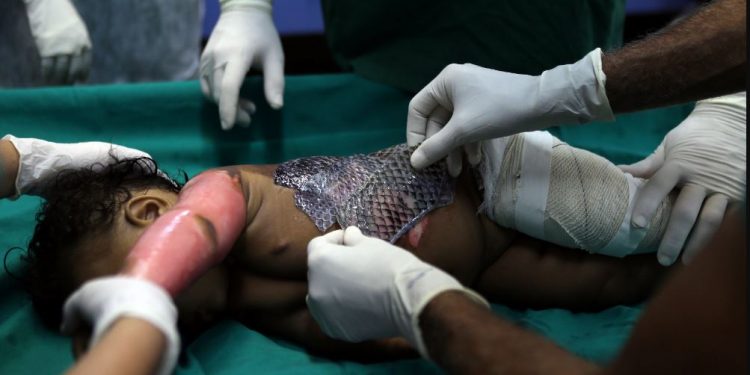Toronto: Researchers have made an exciting leap forward in understanding how skin heals, which could lead to drug treatments to vastly improve wound healing. According to the study, published in the journal Cell Stem Cell, people who suffer severe burns or extensive skin injuries are often left to live with the skin that feels chronically tight and itchy.
“We identified a specific population of progenitor cells that reside within the dermis, the deep connective tissue of the skin,” said lead author Jeff Biernaskie from the University of Calgary in Canada.
Progenitor cells are unique in that they are able to undergo cell division and generate many new cells to either maintain or repair tissues.
“Following injury, these dermal progenitors become activated, proliferate and then migrate into the wound where they generate nearly all of the new tissue that will fill the wound, both scar and regenerated tissue,” Biernaskie explained.
This study offers new knowledge on why certain dermal cells are able to regenerate new skin, rather than disfiguring scar tissue. Using cutting-edge genomics techniques to profile thousands of individual cells at different times after injury, the research team compared scar-forming versus regenerative zones within skin wounds.
The researchers found that although these cells come from the same cellular origin, different micro-environments within the wound activate entirely different sets of genes.
“Meaning, the signals found within ‘regenerative zones’ of the wound promote re-activation of genes that are typically engaged during skin development,” Biernaskie said.
“Whereas in scar-forming zones these pro-regenerative programs are absent or suppressed and scar-forming programmes dominate,” he added. Working with these findings, the researchers then showed it’s possible to modify the genetic programs that govern skin regeneration.
“What we’ve shown is that you can alter the wound environment with drugs, or modify the genetics of these progenitor cells directly, and both are sufficient to change their behaviour during wound healing,” the researchers said.
“And that can have really quite impressive effects on healing that includes regeneration of new hair follicles, glands and fat within the wounded skin,” they added. This research offers critical insights into the molecular signals that drive scar formation during wound healing and it identifies a number of genetic signals that are able to overcome fibrosis and promote true regeneration of adult skin.
“Our hope is to develop a cocktail of drugs that we could safely administer in humans and animals to entirely prevent genetic programs that initiate scar formation in order to greatly improve the quality of skin healing,” the authors wrote.







































